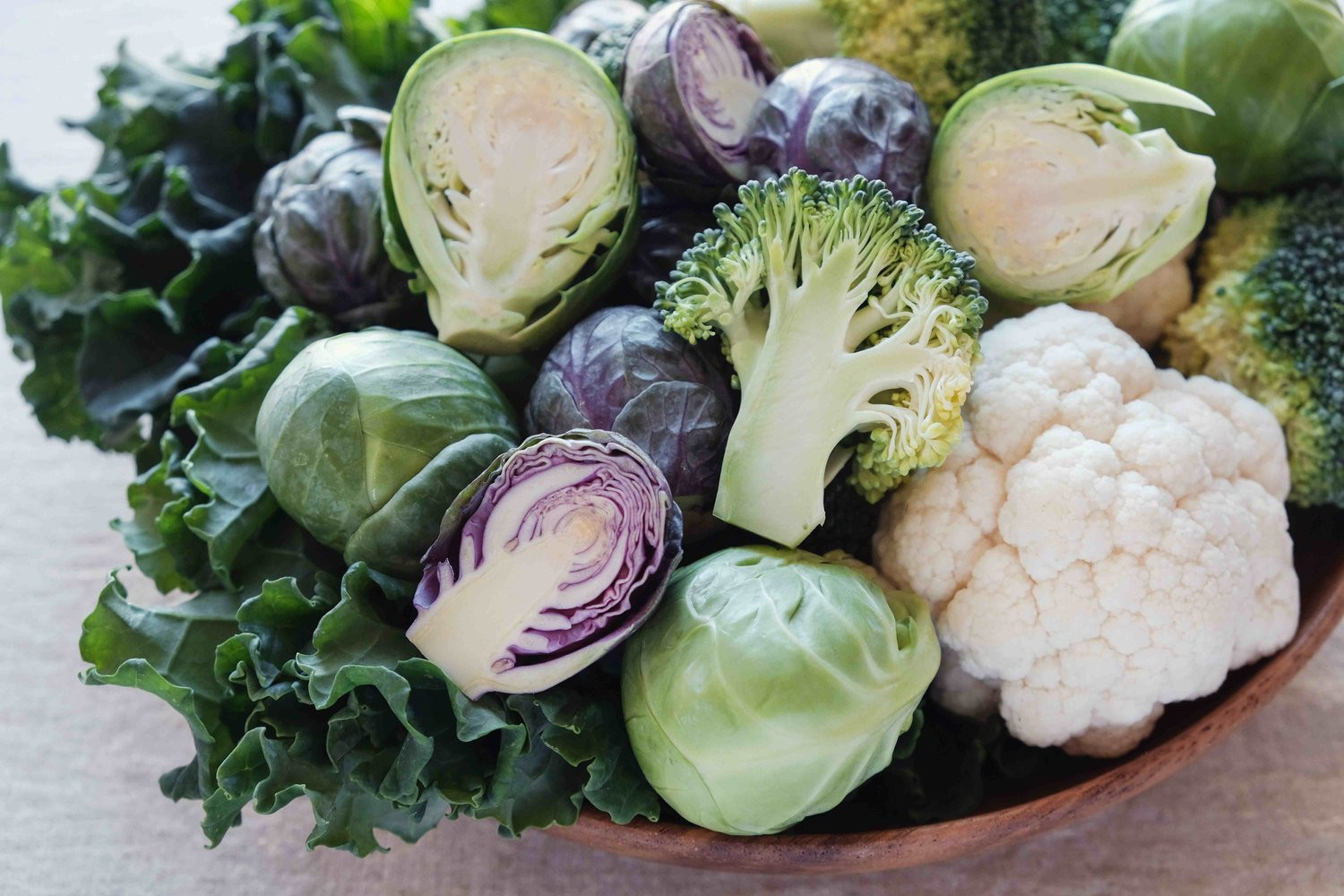
During the chilly winter months, our diets often shift towards heavier and comfort foods, leaving the crisp, fresh vegetables of summer behind. However, incorporating cruciferous vegetables into our winter meals can bring both warmth and nutrition, even on the coldest days. Vegetables such as broccoli, Brussels sprouts, kale, and cabbage are not only abundant during this season but also packed with vitamins, minerals, and fiber.
Incorporating cruciferous vegetables into your winter diet can boost your immune system and help fight off seasonal colds. The high levels of vitamin C and antioxidants found in these vegetables play a crucial role in enhancing bodily defenses.
Some studies show that these veggies can help us fight from the common cold to other more pesky viruses!
Additionally, these power-house veggies are know to help reduce inflammation, cancer risk as well as supportive in detoxification!
Embracing these winter-friendly greens not only diversifies your palate but also supports overall well-being during the colder months.
Cruciferous vegetables belong to the Brassicaceae family and are praised for their health benefits, including being rich in vitamins, minerals, fiber, and antioxidants. Here is a list of some common and a few less familiar cruciferous vegetables:
1. **Broccoli** - A widely consumed vegetable, known for its cancer-fighting properties and high vitamin C content.
2. **Cauliflower** - Versatile in recipes, it can be used in place of rice or mashed like potatoes.
3. **Brussels Sprouts** - Miniature cabbage-like veggies that when roasted, bring out a sweet, nutty flavor.
4. **Kale** - A superfood loaded with vitamins A, K, and C, along with numerous other nutrients.
5. **Cabbage** - Comes in various colors, including green, red, and purple, and is a staple in salads and coleslaw.
6. **Bok Choy** - Also known as Chinese cabbage, it’s great in stir-fries and soups.
7. **Collard Greens** - Known for their slightly bitter taste, often simmered with spices and meats in Southern cuisine.
8. **Arugula** - A peppery, leafy green often used in salads and on pizzas.
9. **Watercress** - A nutrient-packed leafy green with a spicy and slightly tart flavor.
10. **Radishes** - Small, spicy root vegetables that add a crunch to salads and side dishes.
11. **Turnips** - The roots can be mashed or roasted, while the greens are great for sautéing.
12. **Rutabagas** - A cross between a turnip and a cabbage, good for mashing or roasting.
13. **Mustard Greens** - Have a peppery taste and are often eaten cooked in southern U.S. cuisine.
14. **Kohlrabi** - Looks like a turnip but tastes more like cabbage or broccoli stems; great for eating raw or cooked.
15. **Daikon Radish** - A large, mild-flavored radish commonly used in Asian cuisine.
Incorporating these vegetables into your diet can bring significant health benefits due to their nutrient density and disease-fighting properties. Whether you're roasting, sautéeing, blending, or eating them raw, there's a cruciferous vegetable for every taste and recipe.
What’s your favorite crucifer??? Share your favorite recipes here!








0 Comments